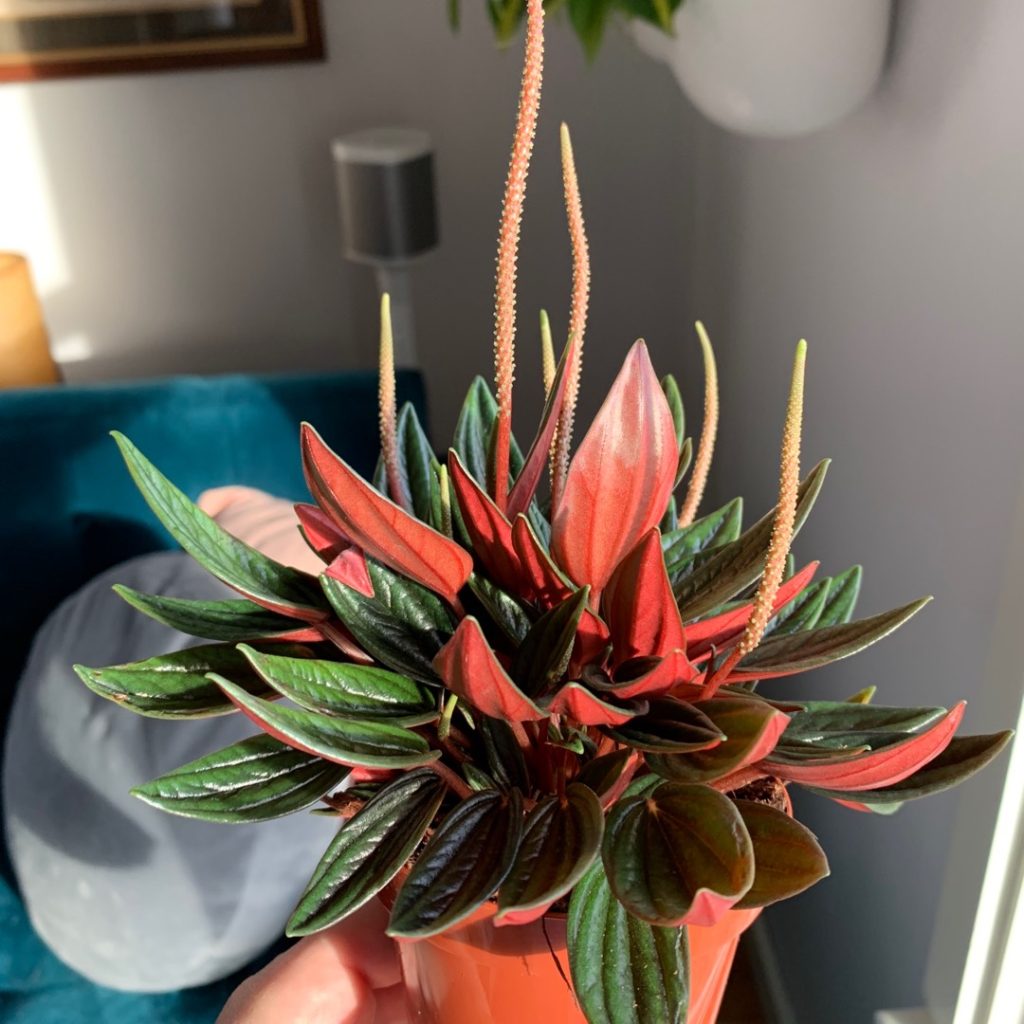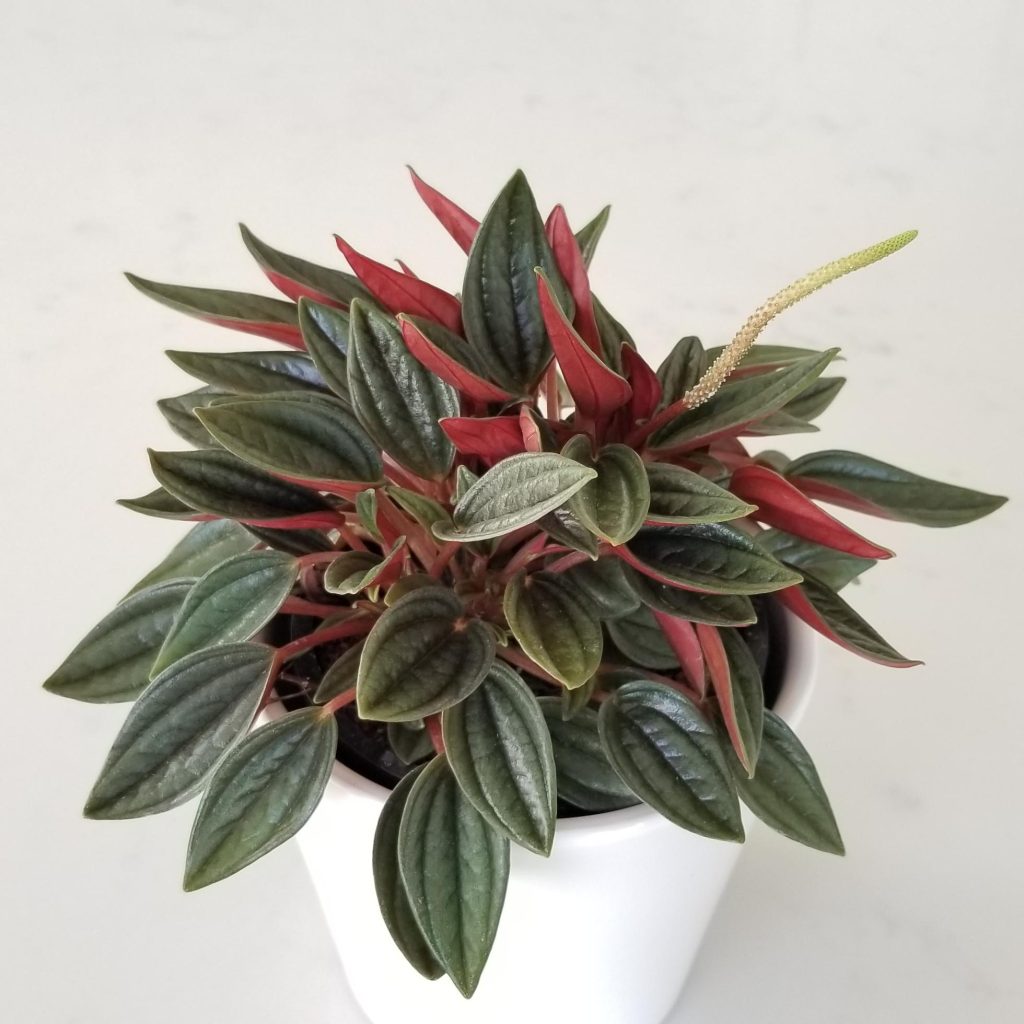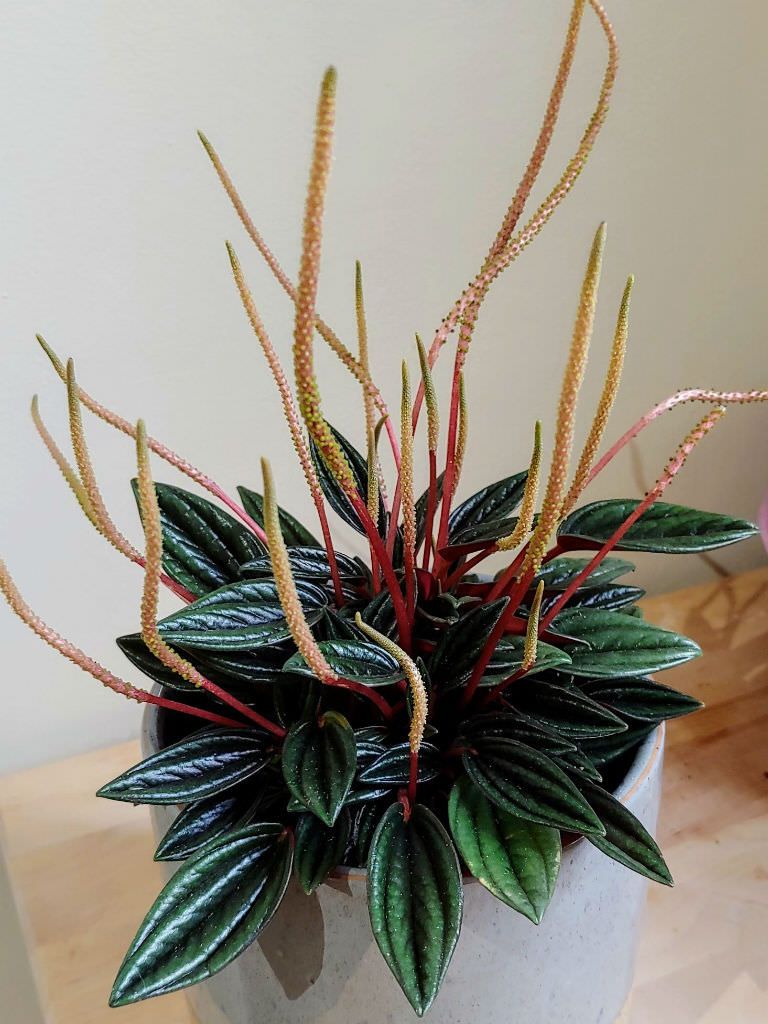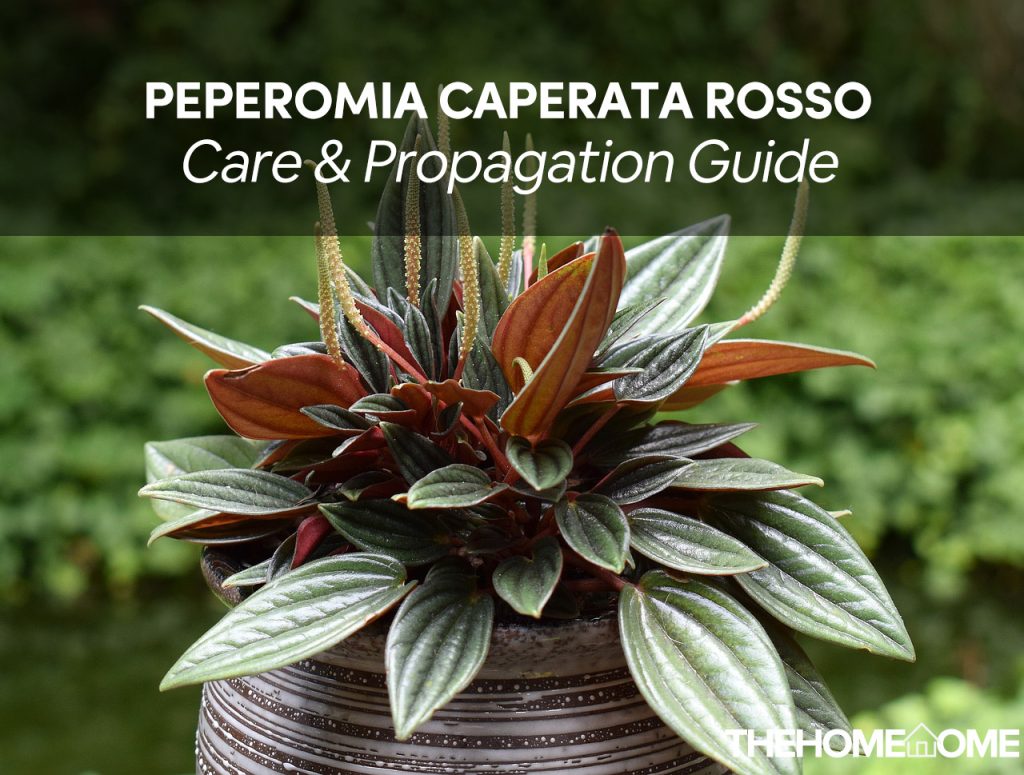Peperomia caperata Rosso is one of the most distinct-looking peperomia varieties. The tropical houseplant is popularly known for its adorable leaves and small size. Alongside this, the plant is also loved because it is of low maintenance, which means that they are easy to care for and grow.
Similar to other members of the peperomia family, the caperata rosso comes with lovely foliage which grows in green and deep red colors, and this has earned the plant a favorite among many.
This plant is specially grown and kept in places such as kitchen bench-top, working desks, shelves, etc. the peperomia Caperata Rosso is indeed easy to grow, however, a lot can be gotten wrong if you do not understand the peperomia caperata rosso care and propagation guide.
Peperomia Caperata Rosso Explained
The peperomia caperata rosso is a hybrid of peperomia metallic and peperomia marmorata. The plant is native to South America, Central America, Brazil, and Bolivia, however, it can be found in Florida, Mexico, and the Caribbean.
In alignment with its name, the plant’s leaves are characterized by its wrinkles, its heart-pointed shape, and its red and green leaves.
The caperata rosso goes by other names such as green ripple pepper, radiator plant, little fantasy pepper, etc. the plant can grow to about 8 inches high and wide, with very long stems as compared to many other plants.
An attractive part of the plant is its smooth, glossy, and thick texture. The caperata Rosso is an evergreen plant, which means that if it is properly cared for, it can stay beautiful and lush throughout its entire life.
| Common Name | green ripple pepper, radiator plant, little fantasy pepper |
| Botanical Name | peperomia caperata rosso |
| Plant type | Shrub |
| Soil type | Well draining soil |
| Temperature | 13 to 24 degrees C |
| Light | Bright, indirect light |
| Native | South America, Central America, Brazil, and Bolivia |
| Toxicity | Non-toxic. |

Peperomia Caperata Rosso Propagation
Peperomia plants are one of the easiest to propagate and the caperata rosso is not an exception, not only is the plant easy to propagate but also roots fast, if grown in the right condition, following the right procedure.
The caperata rosso method is slightly different from that of many other plants, yet simple.
The plant can be propagated via stem or leaf cutting. Propagation via leaf cutting is possible because the plant grows a long stem. Caperata rosso can also be propagated with water, before transferring to the soil; we advise that you perform whatever method comes easy for you.
Needs For Propagation:
- Healthy and mature peperomia caperata rosso
- Sterilized knife or shears
- Pot of well-drained potting mix
1. Stem Cutting
- Make a cutting of about 6 inches long from a healthy and mature plant, with the use of a sterilized knife or shears, to prevent bacteria or any other diseases. It is also of utmost importance that your plant is healthy, so you do not transfer diseases or pests to the new plant.
- Remove the leaves at the bottom of the stem, keeping only the ones on top.
- Prepare a pot with drainage holes, and then fill it with well-draining potting mix. Thereafter, make a hole in the soil and put your stem cutting in it. Cover up the hole that is uncovered, water your plant and place the pot in a location with a warm temperature and adequate lighting.
2. Leaf Cutting
- Identify a healthy and mature peperomia caperata rosso and make a leaf cutting from it, with the use of sterilized objects such as knives, scissors, or shears. You can cut out one or more leaves as this method allows you to grow them first in one container.
- Dip the stem attached to the leaves into rooting hormones, this will speed up the rooting process and increase their chance of success.
- Afterward, place the plant into the prepared pot of well-draining potting mix. Water it and place it in the right location.
- Your plant should sprout its roots in 3 to 4 weeks.
3. Water Growing
- Make your leaf or stem cutting and place them in a jar of water. Make sure you are using a transparent jar that will allow you to monitor the growth process of your plant.
- In 2- 3 weeks, your plant should develop its roots.
- Once the roots are developed, transfer the cutting into the soil (well-draining soil) and care for it following the right care guide.
Peperomia Caperata Care Guide
The caperata rosso is an extremely easy plant to care for; however, there are specific instructions that should be followed to realize a healthy and mature plant in no time. The following care guide has been specifically prepared for you, to land you the healthy peperomia caperata rosso you want.
1. Water
Tendering to the water needs of caperata rosso is fairly an easy task. The plant enjoys being watered thoroughly, yet hates to be overwatered.
Water the plant thoroughly and refrain from watering again until the topsoil is dry, ensure you make use of a stick or your finger to check if the few top inches are truly dried, afterwards, you can water again.

This way, your plant gets the best of watering and does not get overwatered. Watering in the summer and other hot and dry months will be different from cold months and seasons. You should water more during the dry and hot months, and water it less in the cold seasons.
The peperomia caperata rosso is very susceptible to diseases as a result of overwatering and under-watering; ensure you strike a balance with watering. The most important places to water are the soil and roots, watering the leaves and stems can lead to the development of fungal growth
2. Light
When it comes to light requirements, peperomia caperata rosso will not pose any trouble. The plant thrives when it is exposed to bright, indirect light. Although natural light is more appreciated, this adorable plant will also grow properly under artificial light.
Whether they are grown indoor or outdoor, the lighting requirements remain the same. Alternatively, they can be placed in direct sun for a few hours and kept indoors for the rest of the day.
The suggested location for this plant is the south, east, and west-facing windows. Placing them in too much light will burn the leaves while placing them in too little light will hinder their growth.
3. Temperature
The temperature that is optimal for your peperomia caperata rosso should be warm, breezy. Because the plant is native to Central and South America, it thrives at temperatures ranging from 13 to 24 degrees Celsius.
Make sure they aren’t exposed to temperatures that are too hot or too cold, as they can’t take extremes. Keep the plant away from heaters, air conditioners, and other similar devices.
4. Humidity
Adequate humidity is vital for a tropical plant like Peperomia caperata rosso to develop, and it should be made available to them. The good news is, the right humidity requirement is the same in most homes, and this means that by merely placing the plant indoors, your caperata rosso should get its right humidity.
In some cases, the air in the home is not enough for the plant, however, there are ways to increase the humidity in the house; you can put your plant (pot) on a pebble tray, or purchase a plant humidifier. Misting your plant once in a while can also temporarily tend to its humidity needs.
5. Soil
The best type of soil recommended for your caperata rosso is light, well-drained soil. The plant is partly succulent, hence standard cacti or succulent mix will set your plant up for good growth. In addition to this, two parts of peat moss and one part perlite can also do the work for your peperomia caperata rosso.
In all you are getting, the most important thing to take note of is that your soil has to be well-draining enough for your plant to have a good life in it.

6. Fertilizer
Your caperata rosso will grow well without fertilizer, however, you should feed them some during the growing seasons alone. Ensure that you make use of a balanced 20-20-20 fertilizer. Moderately feed them once or twice during the growing month.
If your plant is newly repotted, you do not need fertilizer for the first 6 months as this can tamper with its growth. Asides from liquid fertilizers, granular and slow-releasing fertilizers are also encouraged.
Similar to water, ensure that you do not fertilize your plants, in the cold seasons as that is their dormant seasons.
Peperomia Caperata Rosso Growing Tips
Here are some tips for growing this peperomia variety.
- Wash the soil at least once a year; this will get rid of excess salts that have accumulated in the soil, as a result of fertilizer.
- These plants have a very small root system and love to be root bound, hence you may not need to repot them as often as expected.
- If your plant gets bigger than its present pot(this will be visible as its roots will grow out of the drainage holes)
- If accumulated dust is found on this plant, mist the leaves and wipe clean. While you do this, make sure you do not leave any trace of water on the foliages or leave it wet.
- Pruning regularly will keep the plant looking healthy and neat. The best time to prune is the beginning and end of spring.
Is Peperomia Caperata Rosso Toxic?
Peperomia caperata rosso is not a toxic plant, both to pets and children. However, this plant should be kept away from the reach of pets and children so they won’t damage it.
Why Is My Peperomia Caperata Rosso Plant Wilting?
Wilting occurs when your plant’s roots do not get enough air as they should. Oftentimes, this is as a result of over-watering of your plant has gotten bigger than its pot. Observe your plant and your watering schedule, if you notice the soil is overly wet, refrain from watering until the soil is dry and then resume watering the right way.
If your plant has gotten too big, then it is time to re-pot. Move your plant into a pot 1 or 2 inches bigger than its present pot; also ensure it has a good drainage system.
Final Thoughts
Peperomia caperata rosso is a lovely and special plant, not one to be found everywhere. The leaves are unique and are mostly planted for this reason. This plant is grown for several reasons, one of which is that it is of minimal maintenance and easy to reproduce.
To avoid plant mortality or stunted growth, we recommend closely following the care instructions.
More care guides to follow:

